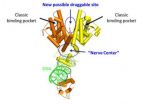(Press-News.org) For the first time, researchers have mapped the genomes of tapeworms to reveal potential drug targets on which existing drugs could act. The genomes provide a new resource that offers faster ways to develop urgently needed and effective treatments for these debilitating diseases.
Tapeworms cause two of the World Health Organization's 17 neglected tropical diseases; echinococcosis and cysticercosis. The team sequenced the genomes of four species of tapeworm to explore the genetics and underlying biology of this unusual parasite. As an adult it can live relatively harmlessly in the gut, but its larvae can spread through the body with devastating effects. The larvae form cysts in the internal organs or tissues of humans and other animals. These cysts proliferate or grow in the body, much like cancer. In some species this can cause complications such as blindness and epilepsy, with others it may lead to death.
"Tapeworm infections are prevalent across the world and their devastating burden is comparable to that of multiple sclerosis or malignant melanoma," says Dr Matthew Berriman, senior author from the Wellcome Trust Sanger Institute. "These genome sequences are helping us to immediately identify new targets for much-needed drug treatment. In addition, exploring the parasites' full DNA sequences is driving our understanding of its complex biology, helping the research community to focus on the most effective drug candidates."
Normally, researchers identify new targets for drugs to combat diseases by comparing a pathogen's genome sequence with the human host's DNA to find differences between them. This time, however, the team deliberately looked for similarities between humans and the parasite because both are multicellular and the tapeworm is evolutionarily similar to humans. By finding similarities, the scientists found targets that exploit the activities of existing drugs. Identifying treatments already on pharmacy shelves and approved for other uses should save time and money.
Many of the processes of these diseases parallel those of cancer tumours, suggesting that tapeworms could be susceptible to cancer treatments, such as suppressing cell division and preventing DNA replication.
When the team compiled a list of most likely targets for drug treatment, many of them were the same targets as pre-existing cancer chemotherapies.
Combining biological knowledge with the full genome also revealed other promising targets for existing drugs. Over time, tapeworms have lost the ability to synthesise the necessary fats and cholesterol that are crucial for larvae development. Instead, they scavenge and modify them from their hosts. The most active genes in the tapeworm are central to this important scavenging process because they produce the proteins that bind fats or are the precursors of fatty acid binding proteins. Disrupting these proteins with current drugs may prove an effective treatment.
"We have developed new method to grow tapeworm cells in the laboratory and we're screening these cells against many of the potential drug treatments identified from the genomes," says Professor Klaus Brehm, co-author from the University of Würzburg, Germany. "Given that so few successful treatment options are currently available, we hope that we will be able to identify and validate existing drug candidates, relieving the burden of this debilitating, overlooked disease."
As well as identifying targets that existing drugs could act on, the team discovered why other treatments have been unsuccessful. For example, targeting the acetylcholinesterases (enzymes present in the central nervous system) has been successful in treating malaria and fluke worms, but was ineffective against tapeworms.
Analysing gene activity showed that the production of acetylcholinesterases is surprisingly low in tapeworm cysts, explaining why their disruption had no effect.
For one tapeworm species, the team managed to assemble essentially complete chromosomes. Surprisingly, this revealed a similar chromosomal organisation with the distantly related flukes. The quality and high level of genomic sequence in this study also enabled the team to examine the evolutionary genetic losses and gains of tapeworms, providing them with hundreds of potential drug targets and eliminating those targets that are unlikely to work against tapeworm infection.
"We need to take advantage of this genetic sequence data to find new and improved ways of coping with this problem that devastates much of the developed and developing world," says Professor Peter Hotez, Dean of the National School of Tropical Medicine at Baylor College of Medicine and Editor-in-Chief of PLoS Neglected Tropical Diseases. "Open access to these complete genomes will accelerate the pace in which we find alternative tools and treatments to combat tapeworm infections."
###
Notes to Editors
Additional Quotes in support of the research
"These tapeworms have accompanied the human being throughout our recorded history; Taenia solium infections were already known in the times of Confucius in China as well as in the Aristotle's Athens," says Professor Juan P Laclette, co-author from the National University of Mexico. "Counting today with this group of genomes is somehow an historical achievement and is very exciting. New opportunities are open now for the treatment, prevention and control of these neglected diseases affecting a number of developing countries."
"These promising findings offer new hope for huge numbers of people around the world – especially the global poor," said David Walker, President of the American Society of Tropical Medicine and Hygiene. "Findings like this remind us that when public and private financing is threatened or cut for research into diseases like tapeworm that is highly associated with poverty, real people and families are the victims. The public and private sectors must work together to reduce this needless suffering."
Publication Details
Tsai IJ, Zarowiecki M, Holroyd M et al. The genomes of four tapeworm species reveal adaptations to parasitism. Nature 2013. Published online 13 March 2013. Doi: http://dx.doi.org/10.1038/nature12031
Funding
The research was supported by The Wellcome Trust, the Universidad Nacional Autonóma de México, the Biotechnology and Biological Sciences Research Council, and a SynTax joint-UK Research Council grant.
Participating Centres
The following institutions supplied or sequenced the strains of tapeworms to allow genome sequencing: the Natural History Museum; the National University of México (Universidad Nacional Autónoma de México, UNAM); the University of Würzburg; the Chinese Academy of Agricultural Sciences; and the Wellcome Trust Sanger Institute.
A full list of participating centres can be found at the Nature website.
Selected Websites
With more than 300,000 enrolled students, the National University of México (Universidad Nacional Autónoma de México, UNAM) is the largest public university in the country and one of the leading universities in Central and South America. UNAM is placed within the best 150-200 universities worldwide in the Academic Ranking of World Universities (ARWU). The Taenia solium Genome Project was one of five megaprojects entirely promoted and funded by UNAM. All researchers participating in this project consortium belong to five Schools and Research Institutes and Centers inside UNAM.
With 25,000 enrolled students, the University of Würzburg is one of the most successful universities in Germany. The Academic Ranking of World Universities (Shanghai Ranking) places her among the best 200 universities worldwide and among the best 14 in Germany. Already in the 1990s, the University began founding renowned interdisciplinary research centers such as the Center for Infection Research. Founded in 1402, the University of Würzburg today commits herself to the four pillars humanities, law and economy, life sciences, natural sciences and technology.
The Wellcome Trust Sanger Institute is one of the world's leading genome centres. Through its ability to conduct research at scale, it is able to engage in bold and long-term exploratory projects that are designed to influence and empower medical science globally.
Institute research findings, generated through its own research programmes and through its leading role in international consortia, are being used to develop new diagnostics and treatments for human disease.
http://www.sanger.ac.uk
The Wellcome Trust is a global charitable foundation dedicated to achieving extraordinary improvements in human and animal health. We support the brightest minds in biomedical research and the medical humanities. Our breadth of support includes public engagement, education and the application of research to improve health. We are independent of both political and commercial interests.
http://www.wellcome.ac.uk
The Natural History Museum is an award-winning tourist attraction and also a world-leading science research centre. Through its collections and scientific expertise, the Museum works to help understand and maintain the richness and diversity of our planet, with groundbreaking partnerships in more than 70 countries. For more information go to http://www.nhm.ac.uk
Baylor College of Medicine in Houston is recognized as a premier academic health science center and is known for excellence in education, research and patient care. It is the only private medical school in the greater southwest and is ranked as one of the top 25 medical schools for research in U.S. News & World Report. BCM is listed 17th among all U.S. medical schools for National Institutes of Health funding, and No. 2 in the nation in federal funding for research and development in the biological sciences at universities and colleges by the National Science Foundation. Located in the Texas Medical Center, BCM has affiliations with eight teaching hospitals. Currently, BCM trains more than 3,000 medical, graduate, nurse anesthesia, and physician assistant students, as well as residents and post-doctoral fellows. BCM is also home to the Baylor Clinic, an adult clinical practice that includes advanced technologies for faster, more accurate diagnosis and treatment, access to the latest clinical trials and discoveries, and groundbreaking healthcare based on proven research.
Contact details
Don Powell
Media Manager
Wellcome Trust Sanger Institute
Hinxton, Cambridge, CB10 1SA, UK
Tel +44 (0)1223 496 928
Mobile +44 (0)7753 7753 97
Email press.office@sanger.ac.uk
End of Notes to Editors
Tapeworm DNA contains drug weak spots
Existing drugs could be effective in treating this damaging parasite, the first full tapeworm genomes reveal
2013-03-14
ELSE PRESS RELEASES FROM THIS DATE:
Computer models predict how patients will respond to HIV drugs
2013-03-14
Results of a study published online in the Journal of Antimicrobial Chemotherapy today (Thursday), demonstrate that computer models can predict how HIV patients whose drug therapy is failing will respond to a new treatment. Crucially for patients in poorer countries, the models do not require the results of expensive drug resistance tests to make their predictions. The study also showed that the models were able to identify alternative drug combinations that were predicted to work in cases where the treatment used in the clinic had failed, suggesting that their use could ...
Drug treatment corrects autism symptoms in mouse model
2013-03-14
Autism results from abnormal cell communication. Testing a new theory, researchers at the University of California, San Diego School of Medicine have used a newly discovered function of an old drug to restore cell communications in a mouse model of autism, reversing symptoms of the devastating disorder.
The findings are published in the March 13, 2013 issue of the journal PLOS ONE.
"Our (cell danger) theory suggests that autism happens because cells get stuck in a defensive metabolic mode and fail to talk to each other normally, which can interfere with brain development ...
ALMA exposes hidden star factories in the early universe
2013-03-14
Some of the brightest galaxies in the universe – infant galaxies that churned out tens of thousands of stars each year at the dawn of the universe – evolved much sooner and in greater numbers than previously thought, according to new measurements obtained by University of Arizona astronomers.
The results are published in a set of papers to appear in the journal Nature on March 14 and in the Astrophysical Journal. The research is the most recent example of the discoveries coming from the new international ALMA observatory, which celebrates its inauguration today. ALMA, ...
Molecule's structure reveals new therapeutic opportunities for rare diabetes
2013-03-14
ORLANDO, Fla., March 13, 2013 – Researchers at Sanford-Burnham Medical Research Institute (Sanford-Burnham) have determined the complete three-dimensional structure of a protein called HNF-4α. HNF-4α controls gene expression in the liver and pancreas, switching genes on or off as needed. People with mature onset diabetes of the young (MODY1), a rare form of the disease, have inherited mutations in the HNF-4α protein. This first-ever look at HNF-4α's full structure, published March 13 in Nature, uncovers new information about how it functions. The study ...
New monoclonal antibody developed that can target proteins inside cancer cells
2013-03-14
NEW YORK, MARCH 13, 2013 – Researchers have discovered a unique monoclonal antibody that can effectively reach inside a cancer cell, a key goal for these important anticancer agents, since most proteins that cause cancer or are associated with cancer are buried inside cancer cells. Scientists from Memorial Sloan-Kettering Cancer Center and Eureka Therapeutics have collaborated to create the new human monoclonal antibody, which targets a protein associated with many types of cancer and is of great interest to cancer researchers.
Unlike other human therapeutic monoclonal ...
'Nuisance' data lead to surprising star-birth discovery
2013-03-14
When a batch of bright cosmic objects first appeared in maps in 2008 made with data from the South Pole Telescope, astronomers at the University of Chicago's Kavli Institute for Cosmological Physics regarded it only as an unavoidable nuisance.
The light sources interfered with efforts to measure more precisely the cosmic microwave background—the afterglow of the big bang. But the astronomers soon realized that they had made a rare find in South Pole Telescope's large survey of the sky. The spectra of some of the bright objects, which is the rainbow of light they emit, ...
Carnivores, livestock and people manage to share same space study finds
2013-03-14
In the southern Rift Valley of Kenya, the Maasai people, their livestock and a range of carnivores, including striped hyenas, spotted hyenas, lions and bat-eared foxes, are coexisting fairly happily according to a team of coupled human and natural systems researchers.
"I wouldn't call the results surprising," said Meredith Evans Wagner, a visiting scholar from the University of Florida in the Center for Systems Integration and Sustainability (CSIS) at Michigan State University and part of the research team. "Other research has shown that people and carnivores can coexist, ...
Bursts of star formation in the early universe
2013-03-14
PASADENA, Calif.—Galaxies have been experiencing vigorous bursts of star formation from much earlier in cosmic history than previously thought, according to new observations by a Caltech-led team.
These so-called starburst galaxies produce stars at a prodigious rate—creating the equivalent of a thousand new suns per year. Now the astronomers have found starbursts that were churning out stars when the universe was just a billion years old. Previously, astronomers didn't know whether galaxies could form stars at such high rates so early in time.
The discovery enables ...
1 in 4 colonoscopies in Medicare patients found to be potentially inappropriate
2013-03-14
Colonoscopy is one of the most effective cancer screening procedures available. Colon cancer grows very slowly and can be treated if caught early through screening. But, perhaps because of this success, older Americans are undergoing screening colonoscopies despite recommendations against screening in adults aged 76 and older.
A new study by researchers at the University of Texas Medical Branch at Galveston published online today in JAMA Internal Medicine shows that one out of four colonoscopies paid for by Medicare is potentially inappropriate under current screening ...
More accurate, sensitive DNA test allows early identification of fungus causing WNS
2013-03-14
MADISON, Wis., March 13, 2013 – Even after researchers studying White Nose Syndrome (WNS) established that a fungus called Geomyces destructans is at the heart of the devastating disease, detecting it depended largely on finding dead or dying bats.
This month, the journal Mycologia will publish research by a team of U.S. Forest Service scientists and partners identifying additional species of Geomyces and describing development of a highly sensitive DNA-based technique for early identification of Geomyces destructans on bats as well as in soils and on cave walls.
"The ...
LAST 30 PRESS RELEASES:
Revealing the diversity of olfactory receptors in hagfish and its implications for early vertebrate evolution
Development of an ultrasonic sensor capable of cuffless, non-invasive blood pressure measurement
Longer treatment with medications for opioid use disorder is associated with greater probability of survival
Strategy over morality can help conservation campaigns reduce ivory demand, research shows
Rising temperatures reshape microbial carbon cycling during animal carcass decomposition in water
Achieving ultra-low-power explosive jumps via locust bio-hybrid muscle actuators
Plant-derived phenolic acids revive the power of tetracycline against drug-resistant bacteria
Cooperation: A costly affair in bacterial social behaviour?
Viruses in wastewater: Silent drivers of pollution removal and antibiotic resistance
Sub-iethal water disinfection may accelerate the spread of antibiotic resistance
Three in four new Australian moms struggle with body image
Post-stroke injection protects the brain in preclinical study
Cardiovascular risk score predicts multiple eye diseases
Health: estimated one in ten British adults used or interested in GLP-1 medications for weight loss
Exercise to treat depression yields similar results to therapy
Whooping cough vaccination for pregnant women strengthens babies’ immune system
Dramatic decline in new cases of orphanhood in Uganda driven by HIV treatment and prevention programs
Stopping weight loss drugs linked to weight regain and reversal of heart health markers
Higher intake of food preservatives linked to increased cancer risk
Mass General Brigham–developed cholera vaccine completes phase 1 trial
First experimental validation of a “150-year-old chemical common sense” direct visualization of the molecular structural changes in the ultrafast anthracene [4+4] photocycloaddition reaction
Lack of support for people on weight loss drugs leaves them vulnerable to nutritional deficiencies, say experts
Dogs’ dinners can have greater climate impact than owners’
Are you ready to swap salmon for sprats and sardines?
1.6 million UK adults used weight loss drugs in past year
American College of Cardiology comments on new dietary guidelines for Americans
American Society of Gene & Cell Therapy and Orphan Therapeutics Accelerator partner to advance and commercialize promising rare disease treatments
One in 14 patients having day case surgery have new or worse chronic pain 3 months after their operation
New study highlights link between eviction rates and gun violence
Heatwaves heat up soil but not toxin levels in rice, study finds
[Press-News.org] Tapeworm DNA contains drug weak spotsExisting drugs could be effective in treating this damaging parasite, the first full tapeworm genomes reveal




